California Quail
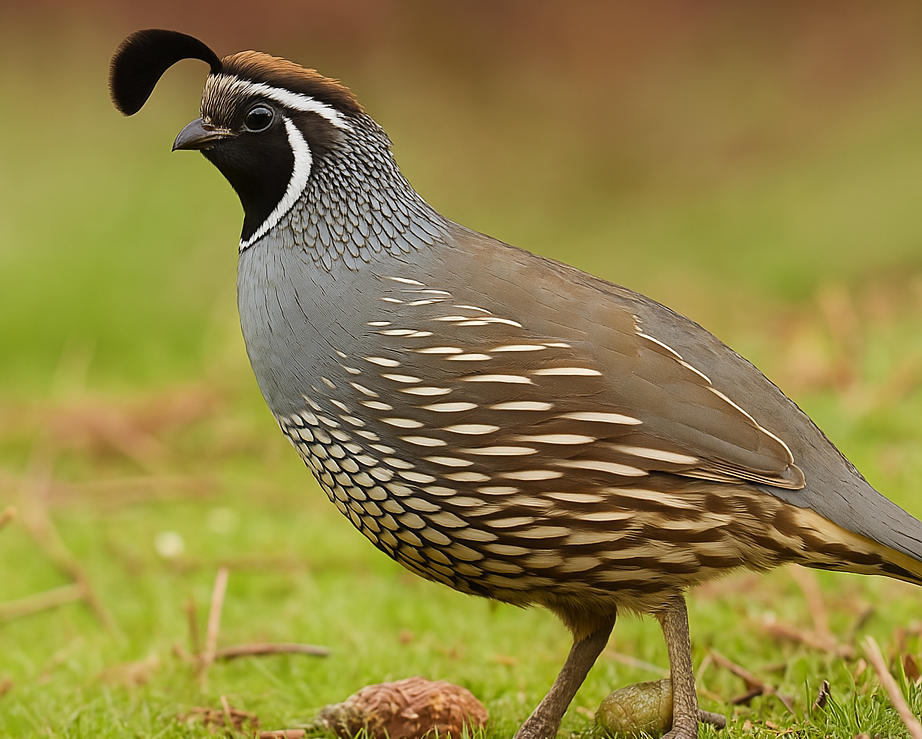
Lifespan
5-7 years
Height
15-20 cm
Length
24-27 cm
Quail Ratio
1 Male to 3-5 Females
The California Quail (Callipepla californica) is a charming and distinctive bird known for its plump body, beautiful plumage, and characteristic head plume, often referred to as a "topknot." These birds are native to the western United States but can be kept as pets with proper care and attention. Here's a comprehensive look at keeping California Quail as pets
California Quail Call (Male Call)
Physical Characteristics
How many females to a male
California quails are social birds. This ratio supports natural social structures, reduces male competition, and ensures that females are not overburdened by mating pressures, leading to a stable breeding group.
Size
California Quail are small, compact birds. An adult California Quail typically weighs between 140 to 200 grams (5 to 7 ounces). A California Quail measuring about 24-27 cm (9.5-10.5 inches) in length, and their height, when standing upright, is typically around 15-20 cm (6-8 inches).
Appearance
They have a distinctive black plume on their heads, and their plumage is a mix of gray, white, and brown, with intricate patterns.
Lifespan
California Quail can live for a considerable amount of time with proper care. In the wild, their lifespan is typically around 1-2 years due to predation and environmental factors. However, in captivity, with good care and a safe environment, California Quail can live up to 5-7 years, and sometimes even longer, reaching up to 10 years. Proper diet, housing, and health care are crucial to maximizing their lifespan.
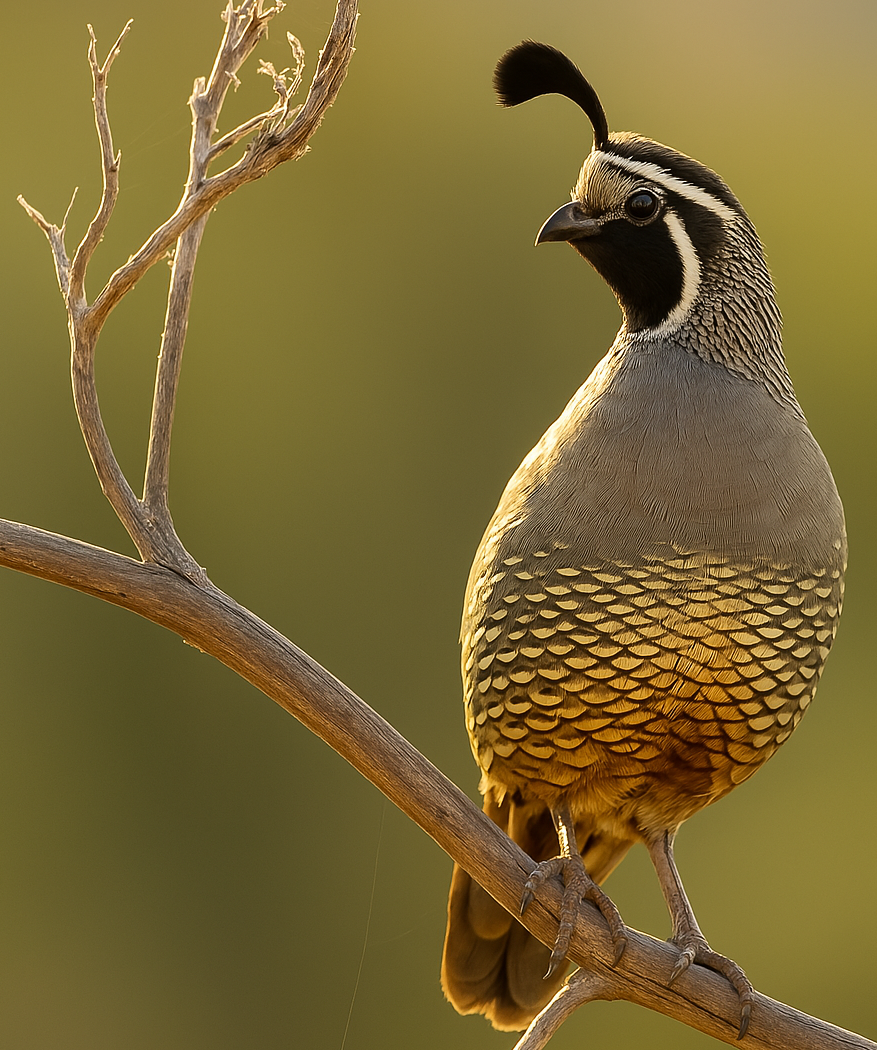
Habitat
Requirements
Provide a spacious aviary or pen, as these quail enjoy room to roam and forage. A minimum of 2 square meters (about 21 square feet) is recommended for a pair. Include bushes, logs, and other hiding places to mimic their natural habitat and provide security.
Substrate
Use natural materials like sand, straw, or wood shavings for the flooring.
Protection
Ensure the enclosure is predator-proof and secure to prevent escapes.
Diet
Feed
Provide a balanced diet consisting of game bird feed or a mix of seeds, grains, and pellets. Supplement with fresh greens, fruits, and occasional protein sources like insects.
Grit
Offer grit to aid digestion, as quail need it to process their food.
Water
Ensure clean, fresh water is always available.
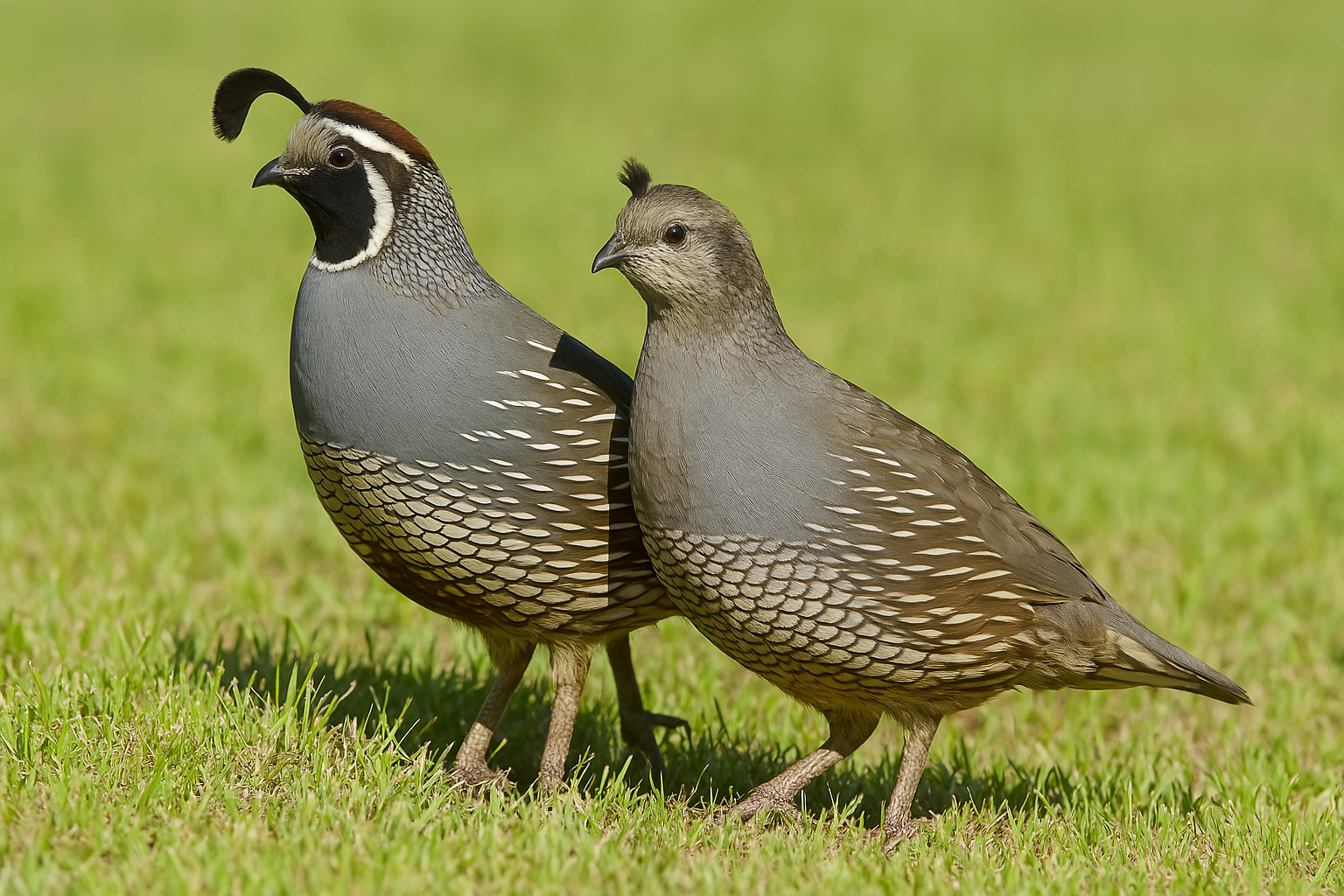
Social Behavior
Group Dynamics
California Quail are social birds and do well in pairs or small groups. They communicate with various calls and display interesting social behaviors.
Activity
These birds are ground dwellers and enjoy foraging, dust bathing, and exploring. Provide enrichment activities to keep them stimulated.
Handling
California Quail can be shy, so minimize handling to reduce stress. They can become accustomed to human presence over time.
Health and Wellness
Clean Environment
Keep the enclosure clean to prevent disease. Regularly change the substrate and clean feeders and waterers.
Health Monitoring
Observe for signs of illness, such as lethargy, changes in eating habits, or abnormal droppings. Consult an avian veterinarian if needed.
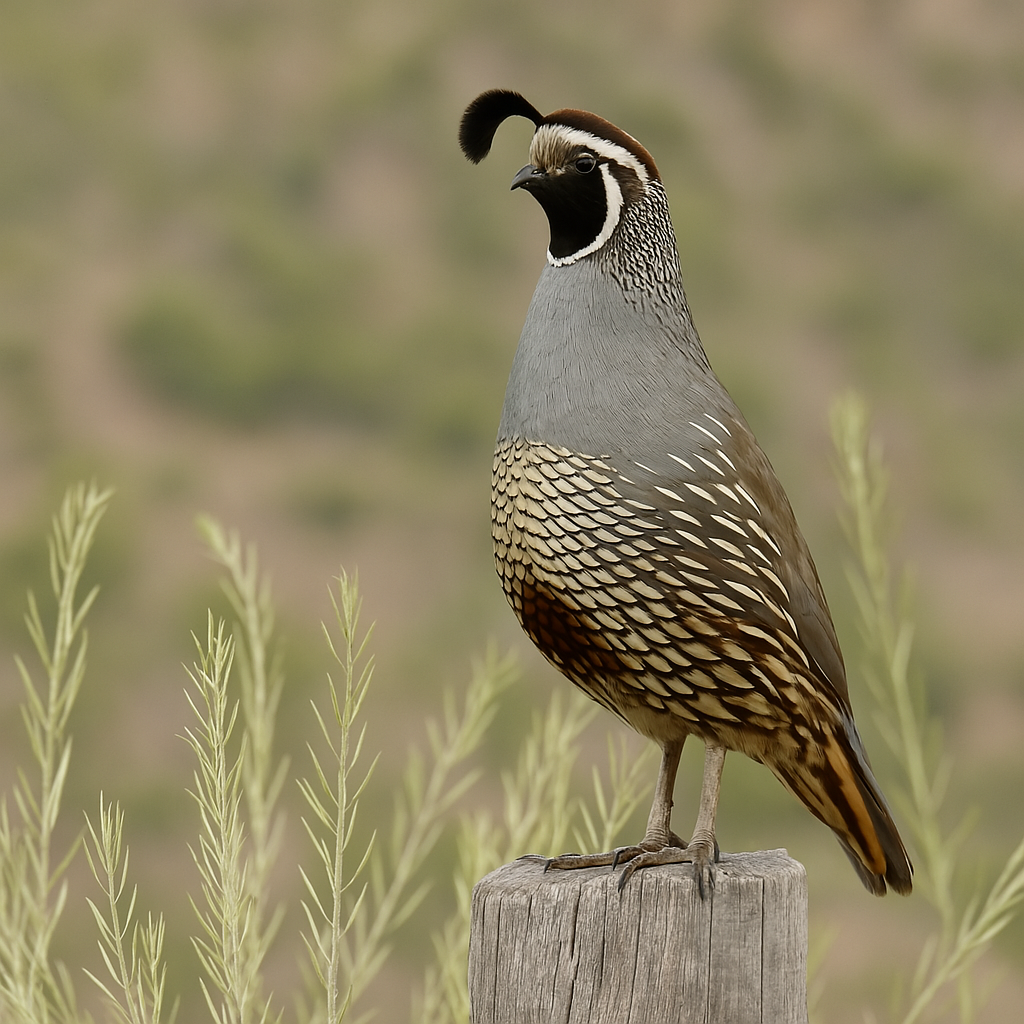
History
Origins and Native Range
The California Quail (Callipepla californica), also known as the Valley Quail, is native to the western United States. Its range includes California, Oregon, Washington, and parts of Nevada and Idaho. These birds are well adapted to various habitats, including woodlands, chaparral, and grasslands.
Cultural Significance
The California Quail holds cultural importance, particularly in California, where it was designated the state bird in 1931. Its iconic "Chi-ca-go" call and distinctive plume have made it a symbol of the state's natural heritage.
Role in Ecosystems
California Quail play a significant role in their native ecosystems. As ground dwellers, they forage for seeds, grains, and insects, helping to control insect populations and disperse plant seeds. Their presence also provides a food source for predators, contributing to the local food web.

Breeding
Breeding Season
California Quails breeding season generally runs from April to July
Nesting
Females lay eggs in simple nests made of grass or leaves. Provide nesting materials to encourage natural behaviors. A female lays between 12 to 16 eggs per clutch. The incubation period is about 21-23 days.
Quail Chick Care
Brooder Setup
Temperature: Provide a heat lamp or ceramic heat emitter to keep the brooder warm. The temperature should be kept at about 95°F (35°C) for the first week, then gradually reduced by 5°F (3°C) each week until the chicks are fully feathered and can regulate their own temperature.
Feeding
Provide a high-protein game bird starter feed with at least 24-28% protein. This feed is crucial for the rapid growth and development of the chicks.
Feeder and Waterer
Use shallow feeders and waterers to prevent chicks from drowning. Marbles or pebbles can be placed in water dishes to keep chicks safe.
Outdoor Transition
Chicks should be fully feathered before transitioning outdoors, usually around 6-8 weeks of age. This ensures they can regulate their body temperature and are better protected against the elements.
Joining the adults
Integration with Adults
Chicks should be at least 6-8 weeks old before joining the adults. They should be fully feathered and able to regulate their body temperature.
Observe Behavior
Watch for signs of aggression or bullying from the adults. If the chicks are significantly smaller or weaker, they may need more time before integration.
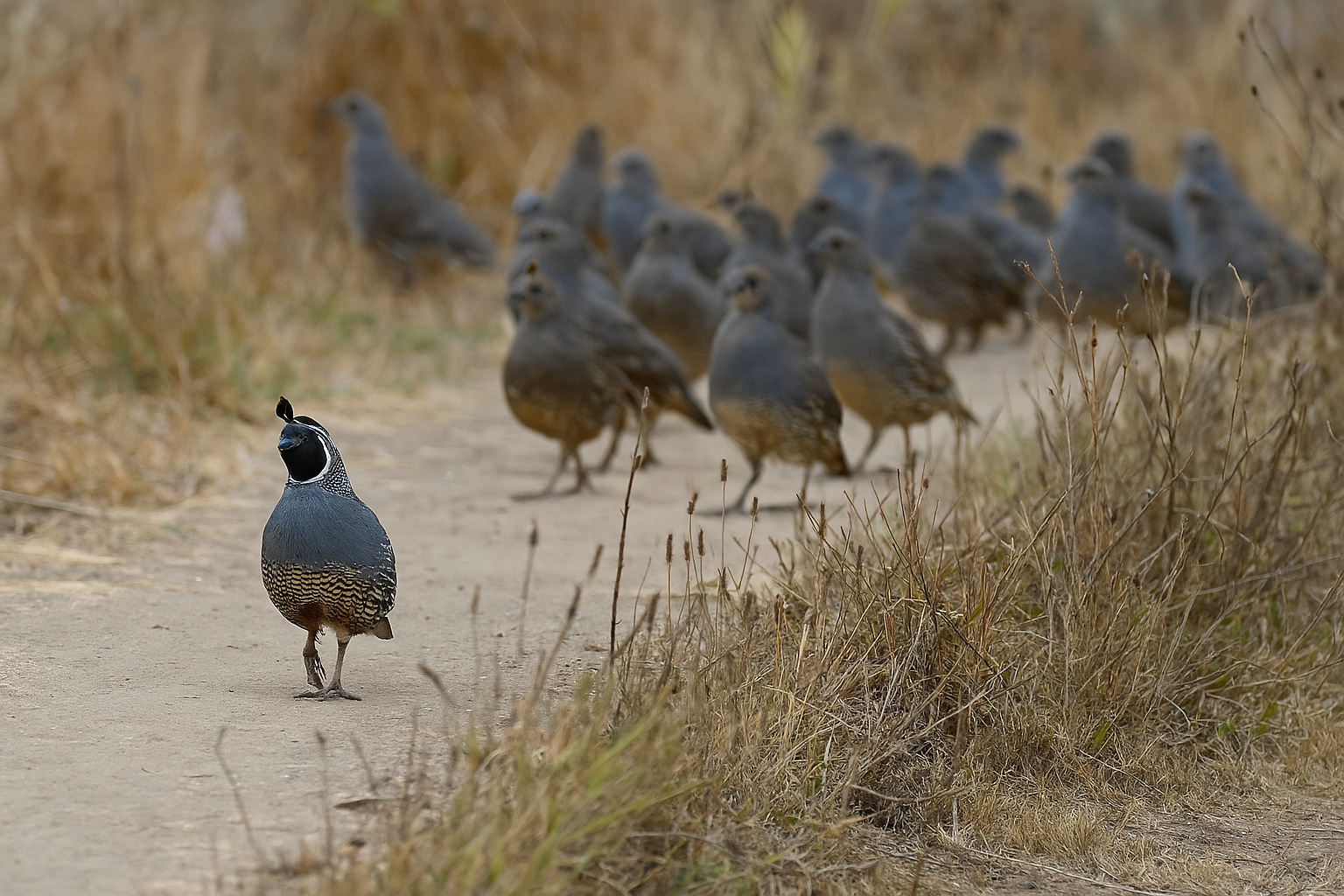
Fun Fact
California Quail form "family coveys" during the breeding season. These are large, cooperative groups where multiple families come together. Adults share the responsibility of caring for and protecting the chicks, including those from different parents, demonstrating strong social bonds and increasing chick survival rates.
In this article
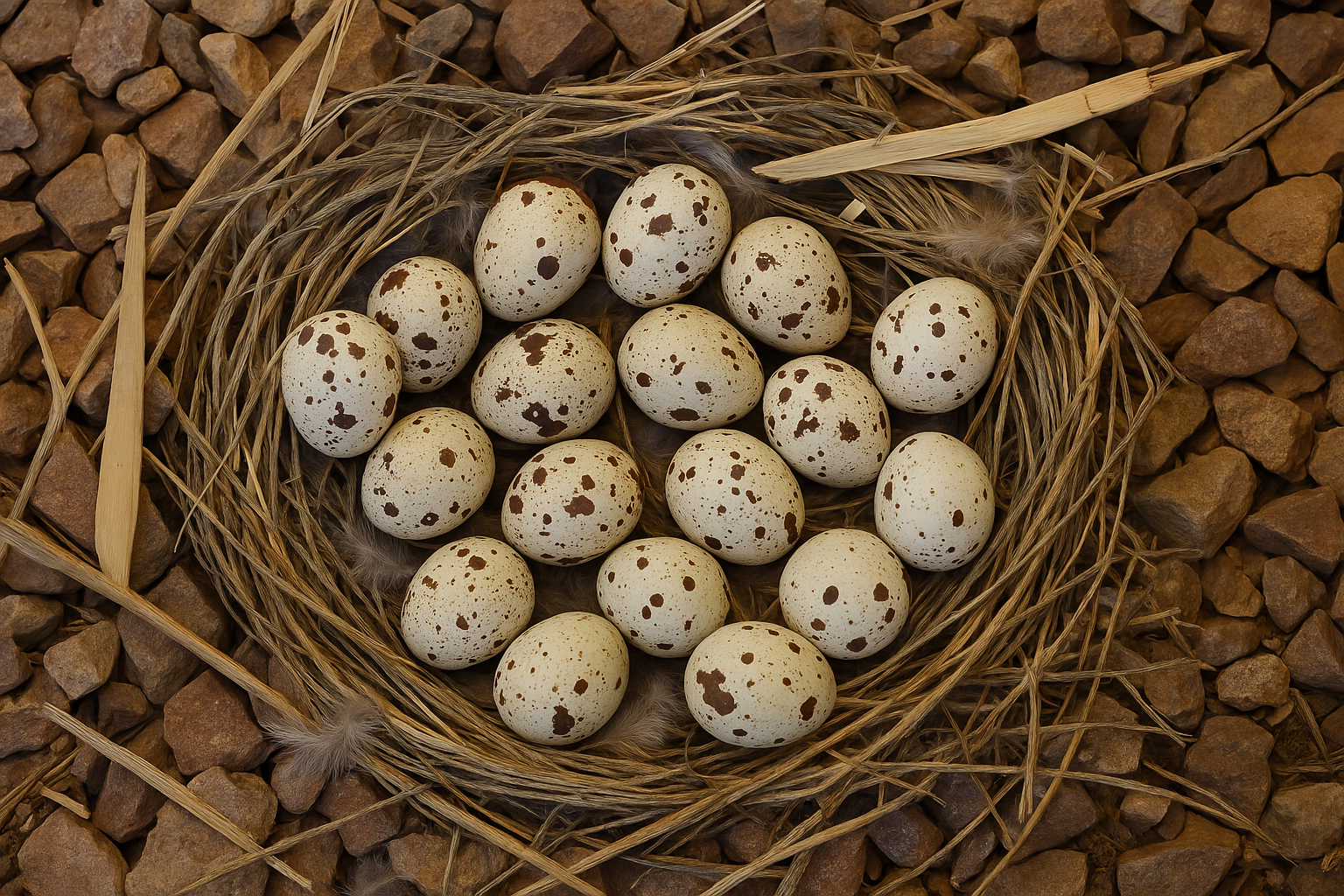
Eggs
California quail eggs are small, typically measuring 1.2 inches (3 cm) in length and weighing around 10-12 grams. They have a smooth, speckled shell, with colors ranging from light tan to pale brown, often covered in darker speckles or spots. The eggs are compact and oval-shaped, making them easily recognizable. These eggs are prized for their delicate flavor and are often used in gourmet dishes.
Legal Considerations
Check local regulations before keeping Bobwhite Quail as pets. Permits may be required in some areas, especially if they are native and protected.
Permits
Permits may be required in some regions for keeping or breeding quail.

Jumbo Celadon Quail
Jumbo Celadon Quail, also known as Coturnix quail, are a popular breed among poultry enthusiasts due to their distinctive blue or light green eggs, larger size, and efficient egg production. They are a selectively bred variety of the standard Coturnix quail, known for their increased body weight and unique egg coloration.
Read more
Bobwhite Quail
The Bobwhite Quail, also known as the Northern Bobwhite or Virginia Quail (Colinus virginianus), known for their distinctive call and charming appearance, can make unique and interesting pets. Bobwhite quail Have long been popular in North America. They require specific care and habitat conditions to thrive in a domestic setting.
Read more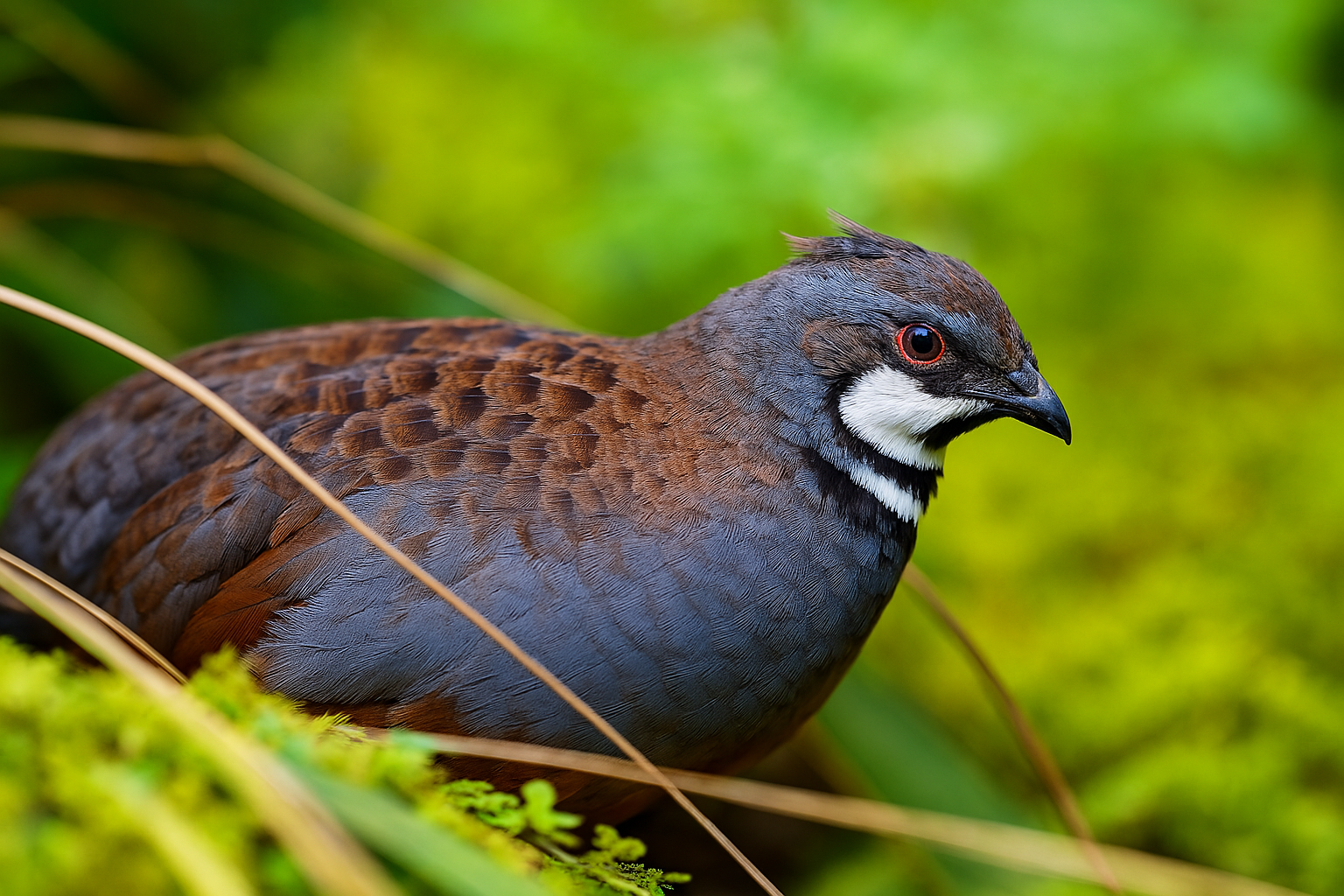
Chinese Painted Quail
Chinese Painted Quail, also known as Button Quail (Coturnix chinensis), are small, charming birds that make fascinating pets. Known for their diminutive size and colorful plumage, they are popular among bird enthusiasts and are often kept in aviaries and bird cages. Their lively behavior and relatively easy care requirements make them a delightful addition to any bird lover's collection.
Read more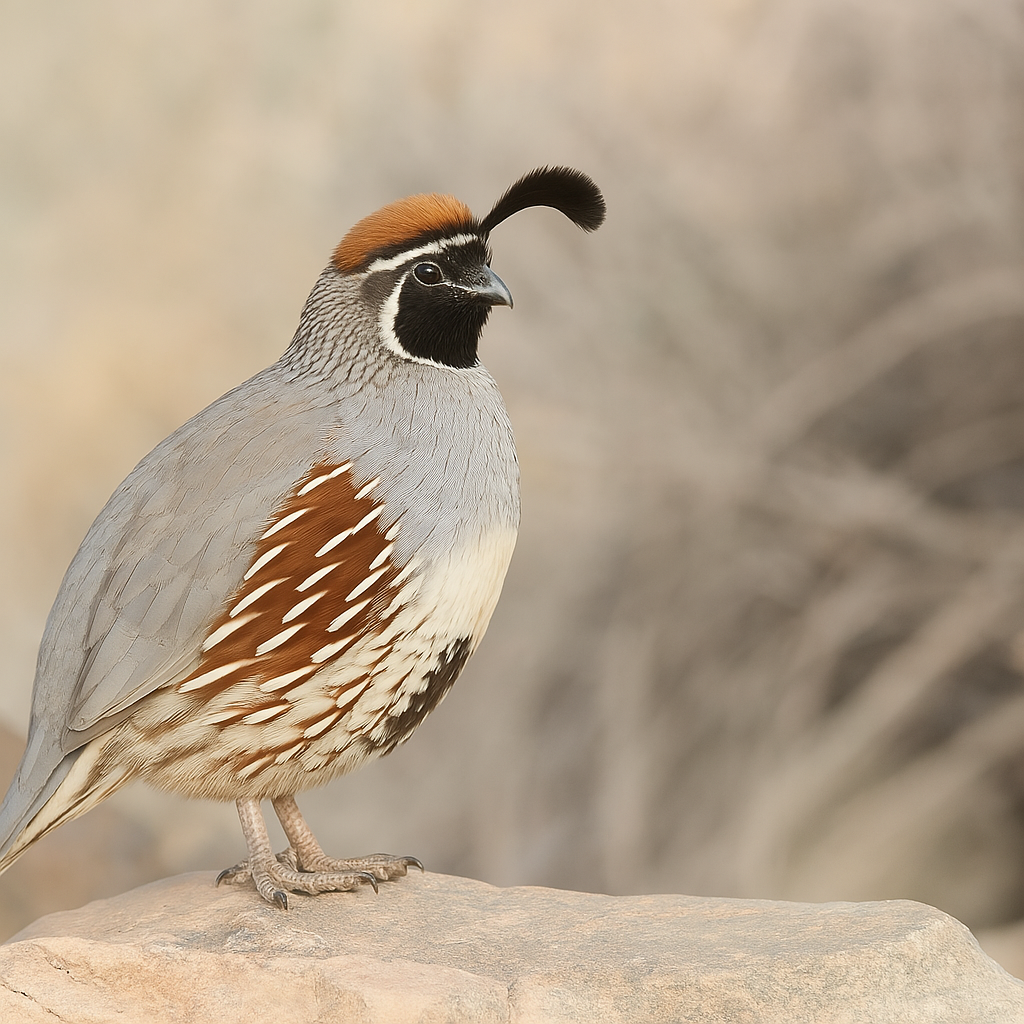
Gambel's Quail
Gambel's Quail (Callipepla gambelii) are popular birds for aviculture due to their attractive appearance, distinctive calls, and relatively calm demeanor. While primarily known as wild birds, Gambel's Quail can be kept as pets under the right conditions, although they have specific care requirements.
Read more
Mountain Quail
Mountain Quail (Oreortyx pictus) are admired for their striking appearance and distinct behaviors, making them an intriguing choice for aviculture. However, their unique needs and natural tendencies require careful consideration for anyone interested in keeping them as pets.
Read more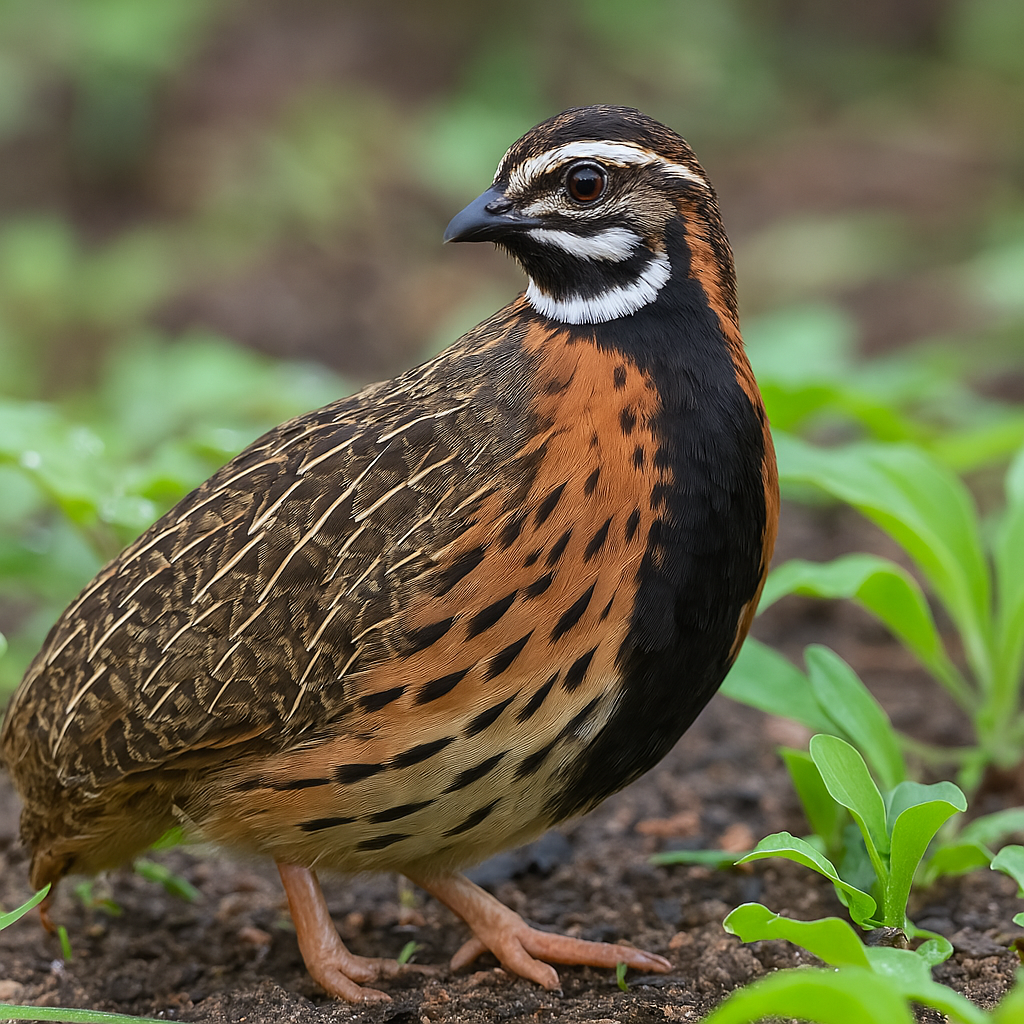
Harlequin Quail
The Harlequin Quail, also known as the Harlequin Button Quail (Coturnix delegorguei), is a small, attractive quail species popular among bird enthusiasts. They are known for their striking appearance, with males typically displaying vibrant plumage patterns.
Read more